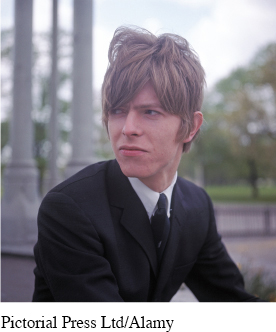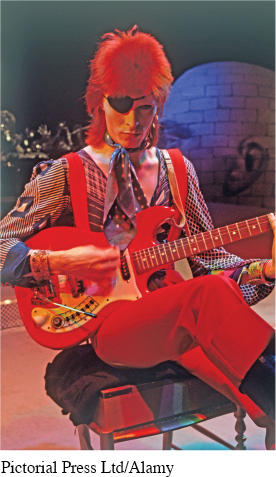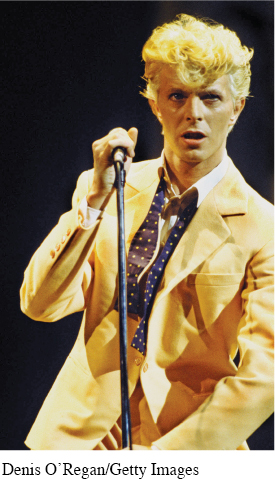5.3 CONVERSATION
CHANGES AND TRANSFORMATIONS
This chapter is about identity and the fact that identities change. You are probably not exactly the same as you were in elementary school. You might not even be exactly the same as you were last month. Why do our identities change? What factors lead to those changes? Certain aspects of our identities may change frequently, like hairstyles, clothes, and interests, perhaps as a result of growing older, moving to a new town, or getting a different group of friends.
Other aspects of identity, such as race, gender, and ethnicity, are seemingly more fixed, although society’s and one’s own perception of these aspects certainly do change. Remember that in the United States, women were not allowed to vote as recently as 1920, and racial segregation was legal in schools until 1954. So in some of these cases, identities can change due to new laws, historical events, and social trends.
David Bowie, a pop singer who began his career in the late 1960s and made a habit of changing his identity with almost every album he released, wrote a song in 1971 called “Changes.” Take a look at a portion of the lyrics on the next page:


Bowie in ’68


Bowie in the early ’70s


Bowie in ’83
So I turned myself to face me
But I’ve never caught a glimpse
Of how the others must see the faker
I’m much too fast to take that test
While the speaker in the Bowie song seems to embrace the changes that are a natural part of life, the protagonists in this Conversation of texts are not necessarily as accepting of the changes they face. Among others, you will read about a young man who leaves all his material goods behind to live in the wilds of Alaska, a young woman who considers leaving her native Ireland to travel to South America, and a middle school student who faces the challenge of keeping an old friend while making new ones. At the end of this section, you will have an opportunity to enter this Conversation on Changes and Transformations, identifying similarities and differences among the various texts and adding your own voice to the discussion of how identities change and transform.